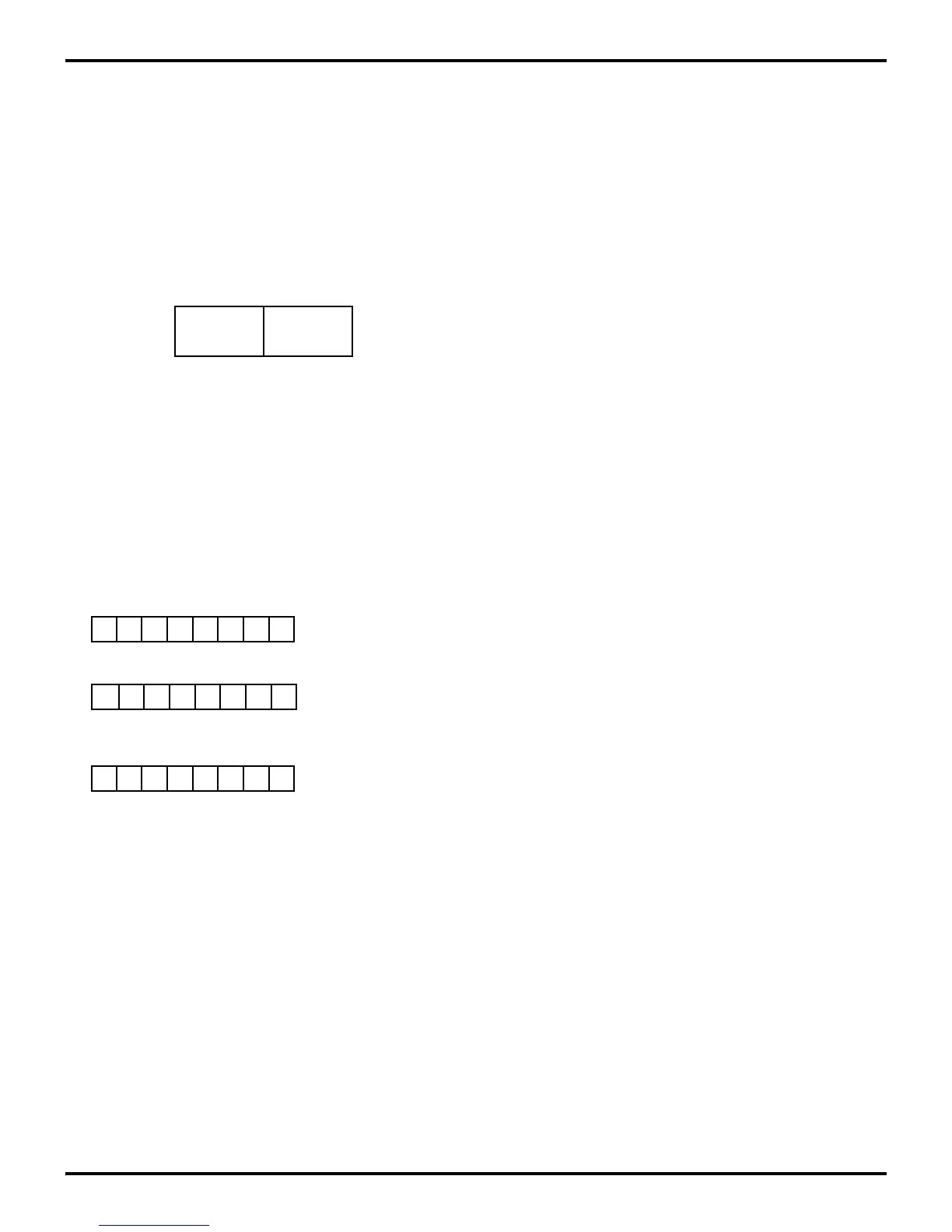Z8 Microcontrollers
Address Space ZiLOG
2-2 UM001601-0803
2.2 Z8 MCU STANDARD REGISTER FILE (Continued)
Registers can be accessed as either 8-bit or 16-bit registers using
Direct, Indirect, or Indexed Addressing. All 236 general-purpose
registers can be referenced or modified by any instruction that
accesses an 8-bit register, without the need for special
instructions. Registers accessed as 16 bits are treated as even-
odd register pairs (there are 118 valid pairs). In this case, the
data’s Most Significant Byte (MSB) is stored in the even
numbered register, while the Least Significant Byte (LSB) goes
into the next higher odd numbered register (Figure 2-1).
By using a logical instruction and a mask, individual bits within
registers can be accessed for bit set, bit clear, bit complement, or
bit test operations. For example, the instruction AND R15,
MASK performs a bit clear operation. Figure 2-2 shows this ex
-
ample.
When instructions are executed, registers are read when defined
as sources and written when defined as destinations. All Gener
-
al-Purpose Registers function as accumulators, address pointers,
index registers, stack areas, or scratch pad memory.
2.2.1 General-Purpose Registers
General-Purpose Registers (GPR) are undefined after the device
is powered up. The registers keep their last value after any reset,
as long as the reset occurs in the V
CC
voltage-specified operating
range. It will not keep its last state from a V
LV
reset if V
CC
drops
below 1.8v.
Note: Registers in Bank E0-EF may only be accessed through
the working register and indirect addressing modes. Direct
access cannot be used because the 4-bit working register address
mode already uses the format [E | dst], where dst represents the
working register number from 0H to FH.
2.2.2 RAM Protect
The upper portion of the register file address space 80H to EFH
(excluding the control registers) may be protected from reading
and writing. The RAM Protect bit option is mask-programmable
and is selected by the customer when the ROM code is submit
-
ted. After the mask option is selected, the user activates this fea-
ture from the internal ROM code to turn off/on the RAM Protect
by loading either a 0 or 1 into the IMR register, bit D6. A 1 in D6
enables RAM Protect. Only devices that use registers 80H to
EFH offer this feature.
2.2.3 Working Register Groups
Z8 instructions can access 8-bit registers and register pairs (16-
bit words) using either 4-bit or 8-bit address fields. 8-bit address
fields refer to the actual address of the register. For example,
Register 58H is accessed by calling upon its 8-bit binary equiv
-
alent, 01011000 (58H).
With 4-bit addressing, the register file is logically divided into
16 Working Register Groups of 16 registers each, as shown in
Table 2-2. These 16 registers are known as Working Registers.
A Register Pointer (one of the control registers, FDH) contains
the base address of the active Working Register Group. The high
nibble of the Register Pointer determines the current Working
Register Group.
When accessing one of the Working Registers, the 4-bit address
of the Working Register is combined within the upper four bits
(high nibble) of the Register Pointer, thus forming the 8-bit ac
-
tual address. Figure 2-3 illustrates this operation. Since working
registers are typically specified by short format instructions,
there are fewer bytes of code needed, which reduces execution
time. In addition, when processing interrupts or changing tasks,
the Register Pointer speeds context switching. A special Set
Register Pointer (SRP) instruction sets the contents of the Reg
-
ister Pointer.
Figure 2-1. 16-Bit Register Addressing
Figure 2-2. Accessing Individual Bits (Example)
MSB
LSB
Rn Rn+1
n = Even Address
0 1 0 1 0 0 0 0
R15
0 1 1 1 0 0 0 0
1 1 0 1 1 1 1 1
MASK
R15
AND R15, DFH ;Clear Bit 5 of Working Register 15
